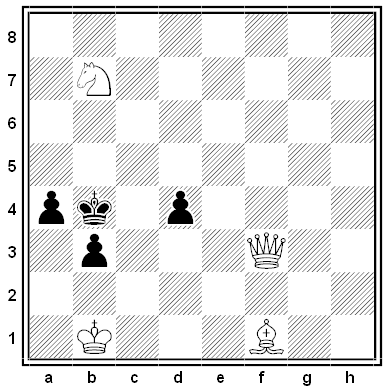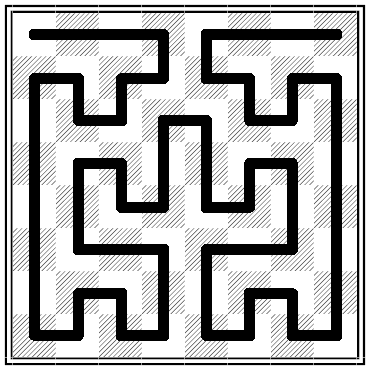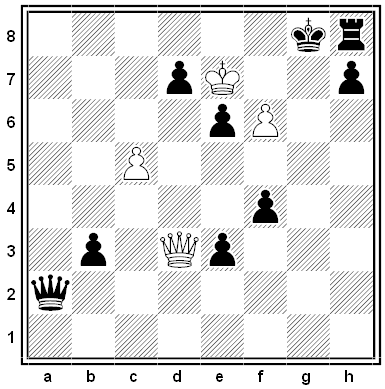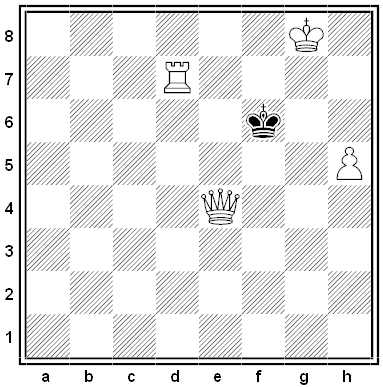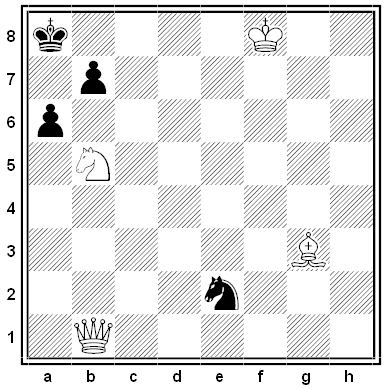Puzzles
The Rolling Die
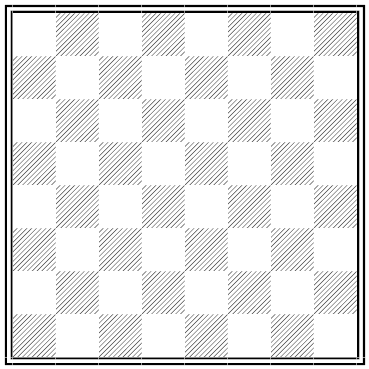
Imagine a die that exactly covers one square of a checkerboard. Place the die in the top left corner with the 6 uppermost. Now, by tipping the die over successively onto each new square, can you roll it through each of the board’s 64 squares once and arrive in the upper right, so that the 6 is exposed at the beginning and end but never elsewhere?
Perspective

In a photograph, is there a way to distinguish between a landscape and its reflection?
Black and White
In a Word
manzil
n. the distance between two stopping places
Another puzzle by Sam Loyd: Two ferry boats ply the same route between ports on opposite sides of a river. They set out simultaneously from opposite ports, but one is faster than the other, so they meet at a point 720 yards from the nearest shore. When each boat reaches its destination, it waits 10 minutes to change passengers, then begins its return trip. Now the boats meet at a point 400 yards from the other shore. How wide is the river?
“The problem shows how the average person, who follows the cut-and-dried rules of mathematics, will be puzzled by a simple problem that requires only a slight knowledge of elementary arithmetic. It can be explained to a child, yet I hazard the opinion that ninety-nine out of every hundred of our shrewdest businessmen would fail to solve it in a week. So much for learning mathematics by rule instead of common sense which teaches the reason why!”
Back from the Klondike
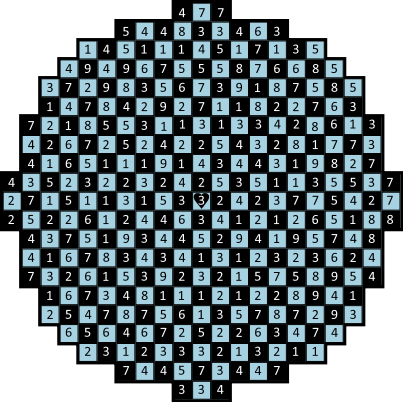
Sam Loyd devised this puzzle in 1898. Begin at the heart in the center and move three squares in any of the eight directions, north, south, east, west, northeast, northwest, southeast, or southwest. You’ll land on a number; take this as the length of your next “march,” which again can go in any of the eight directions. “Continue on in this manner until you come upon a square with a number which will carry you just one step beyond the border, thus solving the puzzle.”
Interestingly, Loyd devised this puzzle expressly to defeat Leonhard Euler’s method of solving mazes. “Euler, the great mathematician, discovered a rule for solving all manner of maze puzzles, which, as all good puzzlists know, depends chiefly upon working backwards. This puzzle, however, was built purposely to defeat Euler’s rule and out of many attempts is probably the only one which thwarts his method.” The original puzzle, as published in the New York Journal and Advertiser, contained a flaw that permitted multiple solutions. That’s been corrected here — there’s only one way out.
Double Trouble
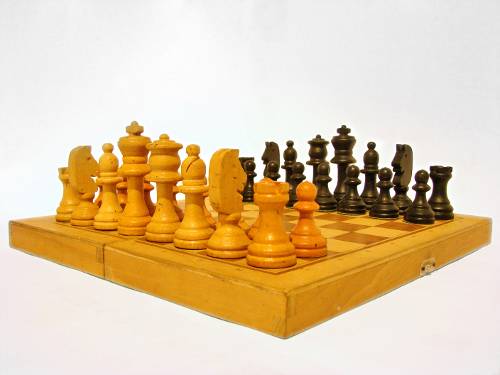
Two-move chess is just like regular chess except that each side makes two moves at a time. Prove that White, who goes first, can be sure of at least a draw.
Black and White
Black and White
An Epigrammatic Puzzle
Nokes went, he thought, to Styles’s wife to bed,
Nor knew his own was laid there in her stead;
Civilian, is the child then begot
To be allow’d legitimate or not?
— Bon Ton Magazine, July 1794

